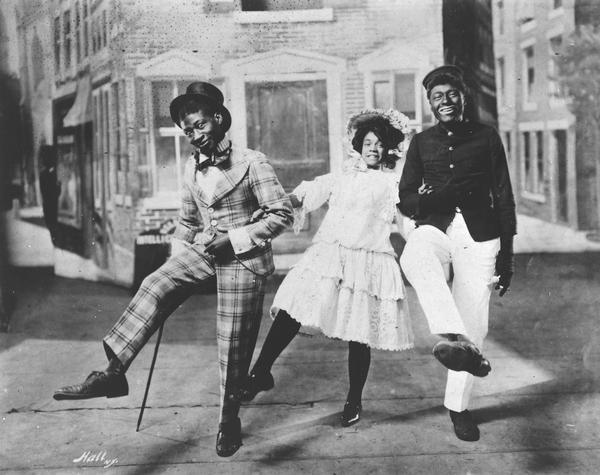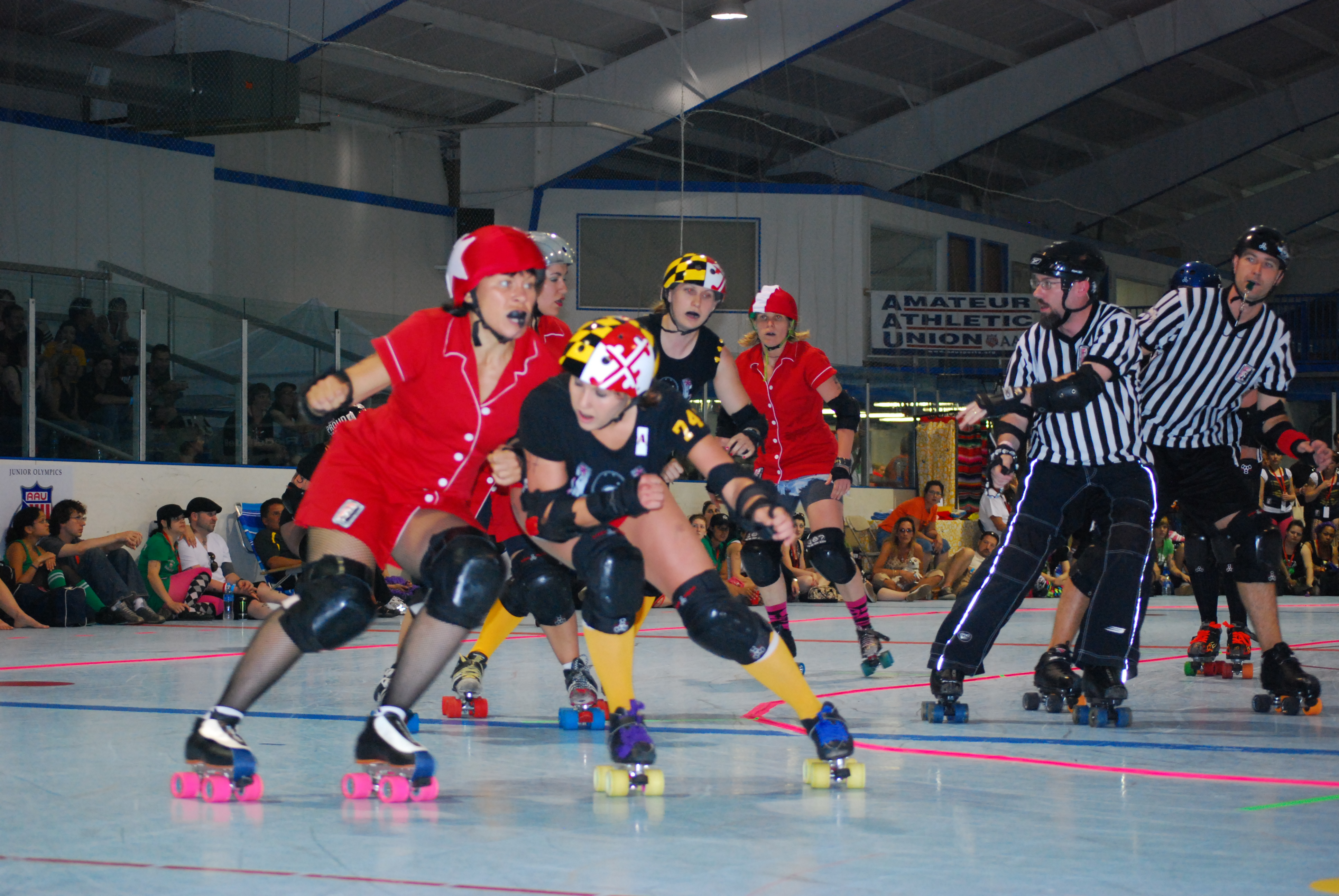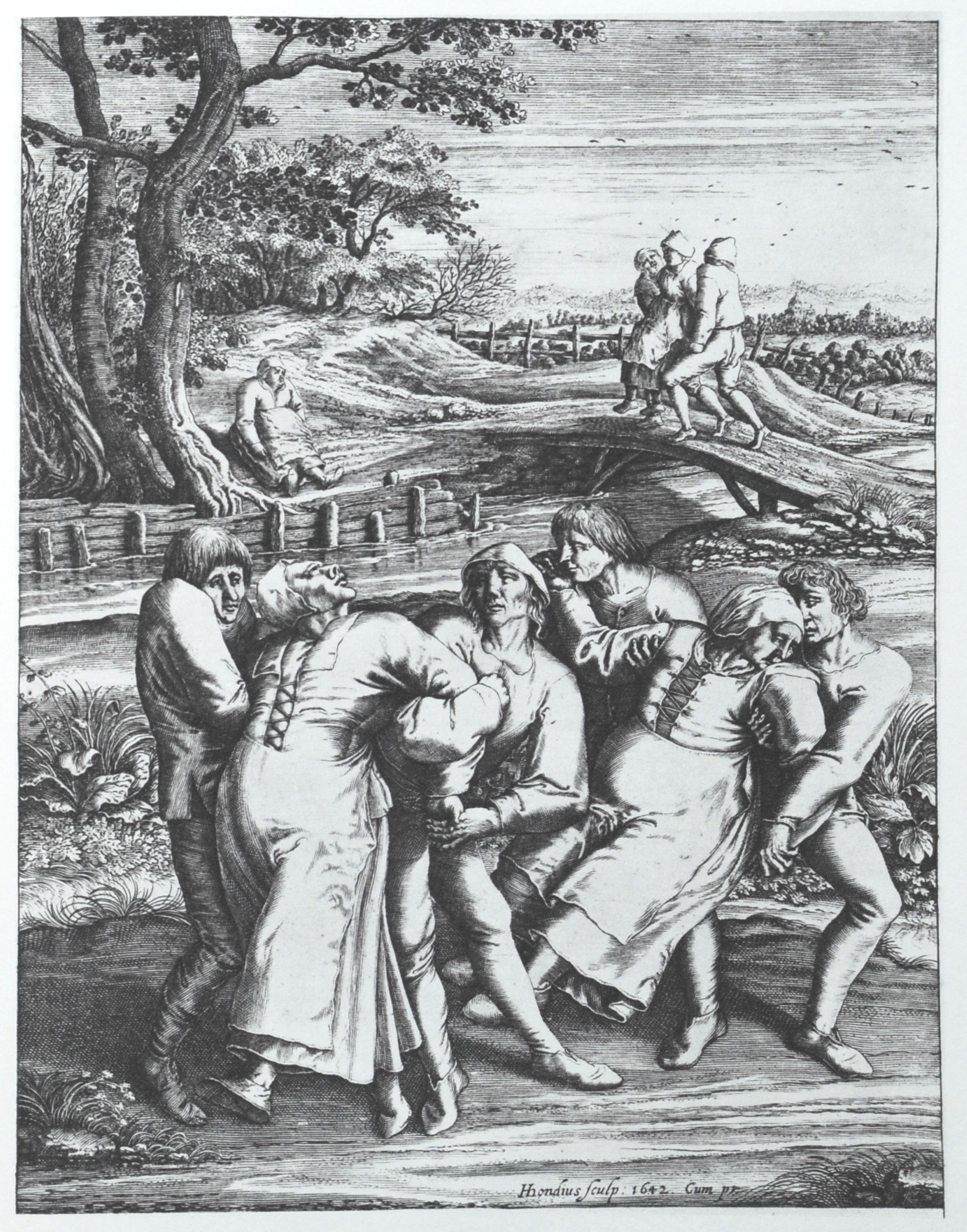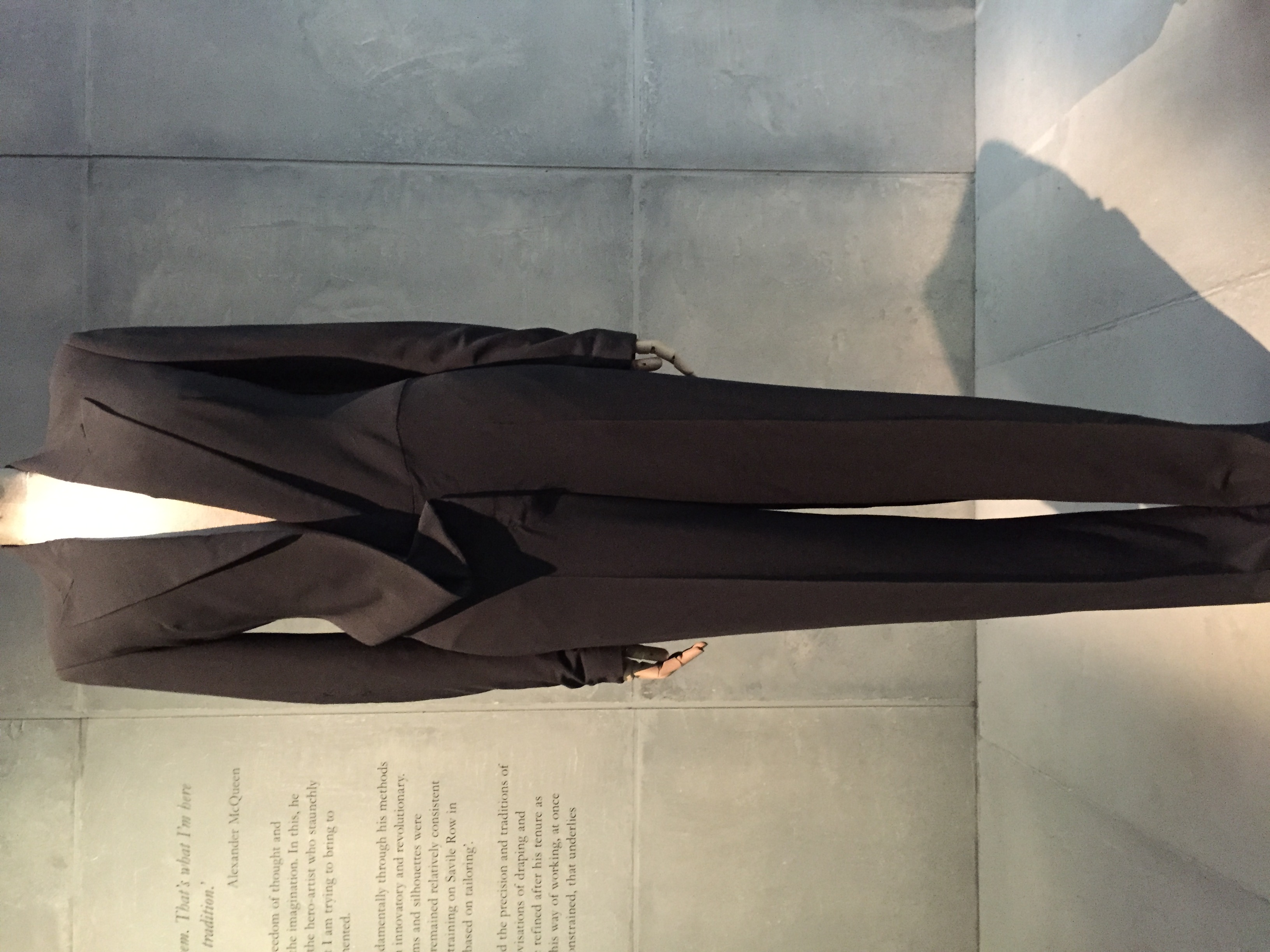|
Dance Marathon
Dance marathons (or marathon dances) are events in which people dance or walk to music for an extended period of time. They started as dance contests in the 1920s and developed into entertainment events during the Great Depression in the 1930s. In the present day, dance marathons are commonly used as fundraisers. These modern marathons are usually 12–24 hours, a far cry from the 1000 hours marathons of the 1930s. Origins According to Professor Carol Martin of New York University, the revival of the Olympic Games created a widespread interest in feats of strength, endurance contest, and world records that led to dance marathons. On February 18, 1923, Olie Finnerty and Edgar Van Ollefin set a record by dancing seven hours without stopping in Sunderland, England. Twelve days later, dance instructor Alma Cummings set a new record at the Audubon Ballroom in New York. She danced continuously for 27 hours with six different partners. Within three weeks, her record was broken ... [...More Info...] [...Related Items...] OR: [Wikipedia] [Google] [Baidu] |
Dance Marathon, 1923
Dance is a performing art form consisting of sequences of movement, either improvised or purposefully selected. This movement has aesthetic and often symbolic value. Dance can be categorized and described by its choreography, by its repertoire of movements, or by its historical period or place of origin. An important distinction is to be drawn between the contexts of theatrical and participatory dance, although these two categories are not always completely separate; both may have special functions, whether social, ceremonial, competitive, erotic, martial, or sacred/liturgical. Other forms of human movement are sometimes said to have a dance-like quality, including martial arts, gymnastics, cheerleading, figure skating, synchronized swimming, marching bands, and many other forms of athletics. There are many professional athletes like, professional football players and soccer players, who take dance classes to help with their skills. To be more specific professional athletes ta ... [...More Info...] [...Related Items...] OR: [Wikipedia] [Google] [Baidu] |
Four Diamonds Fund
Penn State Health Children's Hospital (PSCH) is a nationally ranked women's and pediatric acute care teaching hospital located in Hershey, Pennsylvania. The hospital has 134 pediatric beds. PSCH is affiliated with the Penn State College of Medicine and is located at the Milton S. Hershey Medical Center. The hospital provides comprehensive pediatric specialties and subspecialties to infants, children, teens, and young adults aged 0–21 throughout central Pennsylvania and surrounding regions. Penn State Health Children's Hospital also sometimes treats adults that require pediatric care. PSCH also features an Commonwealth of Pennsylvania designated Level 1 Pediatric Trauma Center, 1 of 4 in the state. It maintains the region's only Level IV (highest level), state-of-the-art neonatal intensive care unit (NICU) and Level I (highest level) pediatric trauma center. It is staffed by 200 pediatric medical and surgical specialists. History Penn State Health Children's Hospital is th ... [...More Info...] [...Related Items...] OR: [Wikipedia] [Google] [Baidu] |
Competitive Dance
Competitive dance is a popular, widespread sport in which competitors perform dances in any of several permitted dance styles—such as acro, ballet, contemporary, jazz, hip-hop, lyrical, modern, musical theatre, tap, and improv—before a common group of judges. This is in contrast with other activities that involve competition among dancers based on purpose, or specific dance styles or genres, such as pom squad and dancesport (competitive ballroom dance). The competitive dance industry largely consists of ''competition production companies''—also sometimes called ''dance competition companies and dance competition lines''—that conduct regional competitions at stops along their annual, nationwide tours. Dancers who compete at these regional competitions are students ranging in age from approximately five to eighteen years old. After competing regionally, qualifying routines and studios go on to compete nationally towards the end of their season. Dance schools (often re ... [...More Info...] [...Related Items...] OR: [Wikipedia] [Google] [Baidu] |
1920s Fads And Trends
Nineteen or 19 may refer to: * 19 (number), the natural number following 18 and preceding 20 * one of the years 19 BC, AD 19, 1919, 2019 Films * ''19'' (film), a 2001 Japanese film * ''Nineteen'' (film), a 1987 science fiction film Music * 19 (band), a Japanese pop music duo Albums * ''19'' (Adele album), 2008 * ''19'', a 2003 album by Alsou * ''19'', a 2006 album by Evan Yo * ''19'', a 2018 album by MHD * ''19'', one half of the double album ''63/19'' by Kool A.D. * ''Number Nineteen'', a 1971 album by American jazz pianist Mal Waldron * ''XIX'' (EP), a 2019 EP by 1the9 Songs * "19" (song), a 1985 song by British musician Paul Hardcastle. * "Nineteen", a song by Bad4Good from the 1992 album ''Refugee'' * "Nineteen", a song by Karma to Burn from the 2001 album ''Almost Heathen''. * "Nineteen" (song), a 2007 song by American singer Billy Ray Cyrus. * "Nineteen", a song by Tegan and Sara from the 2007 album '' The Con''. * "XIX" (song), a 2014 song by Slipknot. ... [...More Info...] [...Related Items...] OR: [Wikipedia] [Google] [Baidu] |
Cakewalk
The cakewalk was a dance developed from the "prize walks" (dance contests with a cake awarded as the prize) held in the mid-19th century, generally at get-togethers on Black Slavery in the United States, slave plantations before and after End of slavery in the United States of America, emancipation in the Southern United States. Alternative names for the original form of the dance were "chalkline-walk", and the "walk-around". It was originally a processional partner dance danced with comical formality, and may have developed as a subtle mockery of the mannered dances of white slaveholders. Following an exhibition of the cakewalk at the 1876 Centennial Exposition in Philadelphia, the cakewalk was adopted by performers in minstrel shows, where it was danced exclusively by men until the 1890s. At that point, Broadway shows featuring women began to include cakewalks, and grotesque dances became very popular across the country.. The fluid and graceful steps of the dance may have g ... [...More Info...] [...Related Items...] OR: [Wikipedia] [Google] [Baidu] |
Leo Seltzer
Leo A. Seltzer (April 5, 1903 – January 30, 1978) is generally credited as the creator of the sport of roller derby, and was the founder and head of the original Roller Derby league from 1935 until his son Jerry Seltzer took over the business in 1958. Early life Seltzer was born in Helena, Montana on April 5, 1903. Seltzer attended Lincoln High School in Portland, Oregon where he was a member of the school's basketball team. He competed in the amateur and semi-pro basketball circuits in Portland after high school. As a young adult, Seltzer was in the motion picture distributing field with the Universal film company. This eventually led him to own a chain of struggling movie theaters in Oregon. In 1929, after observing the popularity of cash prize-awarding dance marathons among out-of-work contestants and spectators, Seltzer sought ways to capitalize on the trend. In 1931, he helped organize and promote "walkathon"s, which at that time was another name for dance marathons, sinc ... [...More Info...] [...Related Items...] OR: [Wikipedia] [Google] [Baidu] |
Roller Derby
Roller derby is a roller skating contact sport played by two teams of fifteen members. Roller derby is played by approximately 1,250 amateur leagues worldwide, mostly in the United States. Game play consists of a series of short scrimmages (jams) in which both teams designate a jammer (who uniquely wears a star on the helmet) and four blockers to skate counter-clockwise around a track. The jammer scores points by lapping members of the opposing team. The teams attempt to hinder the opposing jammer while assisting their own jammer—in effect, playing both offense and defense simultaneously. Overview While the sport has its origins in the banked-track roller-skating marathons of the 1930s, Leo Seltzer and Damon Runyon are credited with evolving the sport to its competitive form. Professional roller derby quickly became popular; in 1940, more than 5 million spectators watched in about 50 American cities. In the ensuing decades, however, it predominantly became a form of sports e ... [...More Info...] [...Related Items...] OR: [Wikipedia] [Google] [Baidu] |
Dancing Mania
Dancing mania (also known as dancing plague, choreomania, St. John's Dance, tarantism and St. Vitus' Dance) was a social phenomenon that occurred primarily in mainland Europe between the 14th and 17th centuries. It involved groups of people dancing erratically, sometimes thousands at a time. The mania affected adults and children who danced until they collapsed from exhaustion and injuries. One of the first major outbreaks was in Aachen, in the Holy Roman Empire (in modern-day Germany), in 1374, and it quickly spread throughout Europe; one particularly notable outbreak occurred in Strasbourg in 1518 in Alsace, also in the Holy Roman Empire (now France). Affecting thousands of people across several centuries, dancing mania was not an isolated event, and was well documented in contemporary reports. It was nevertheless poorly understood, and remedies were based on guesswork. Often musicians accompanied dancers, due to a belief that music would treat the mania, but this tactic som ... [...More Info...] [...Related Items...] OR: [Wikipedia] [Google] [Baidu] |
Alexander McQueen
Lee Alexander McQueen CBE (17 March 1969 – 11 February 2010) was a British fashion designer and couturier. He founded his own Alexander McQueen label in 1992, and was chief designer at Givenchy from 1996 to 2001. His achievements in fashion earned him four British Designer of the Year awards (1996, 1997, 2001 and 2003), as well as the CFDA's International Designer of the Year award in 2003. McQueen died from suicide in 2010 at the age of 40, at his home in Mayfair, London, shortly after the death of his mother. McQueen had a background in tailoring before he studied fashion and embarked on a career as a designer. His MA graduation collection caught the attention of fashion editor Isabella Blow, who became his patron. McQueen's early designs, particularly the radically low-cut "bumster" trousers, gained him recognition as an ''enfant terrible'' in British fashion. In 2000, McQueen sold 51% of his company to the Gucci Group, which established boutiques for his label worldwi ... [...More Info...] [...Related Items...] OR: [Wikipedia] [Google] [Baidu] |
Gilmore Girls (season 3)
The third season of ''Gilmore Girls'', an American dramedy television series, began airing on September 24, 2002 on The WB. The season concluded on May 20, 2003, after 22 episodes. The season was aired on Tuesday nights at 8/7c. On March 25, 2003, The WB announced that the show was renewed for a fourth season. Overview Lorelai has to break the news to Richard and Emily that she and Christopher aren't getting back together, although this does result in her mending her rift with Luke. Rory is estranged from Christopher for a time but later gets back in touch, resulting in the girls attending Sherry's baby shower and supporting her in labor until Christopher arrives. Lorelai has trouble getting back into dating, receiving a dinner invite from Kirk, intermittently dating Alex (the business partner of an old friend of Sookie's), and having a brief reunion with Max. Rory tries to forget about her kiss with Jess by throwing herself into her relationship with Dean, but Dean breaks up wit ... [...More Info...] [...Related Items...] OR: [Wikipedia] [Google] [Baidu] |
Gilmore Girls
''Gilmore Girls'' is an American comedy-drama television series created by Amy Sherman-Palladino and starring Lauren Graham (Lorelai Gilmore) and Alexis Bledel (Rory Gilmore). The show debuted on October 5, 2000, on The WB and became a flagship series for the network. ''Gilmore Girls'' ran for seven seasons, the final season moving to The CW and ending its run on May 15, 2007. ''Gilmore Girls'' received critical acclaim for its witty dialogue, cross-generational appeal, and effective mix of humor and drama. It was a success for The WB, peaking during season five as the network's second-most-popular show. The series has been in daily syndication since 2004, while a growing following has led to its status as a 2000s American cult classic. Since going off the air in 2007, ''Gilmore Girls'' has been cited in '' TV (The Book)'' and ''Time'' magazine as one of the 100 greatest television shows of all time. In 2016, the main cast and Sherman-Palladino returned for the four-part minise ... [...More Info...] [...Related Items...] OR: [Wikipedia] [Google] [Baidu] |
Sydney Pollack
Sydney Irwin Pollack (July 1, 1934 – May 26, 2008) was an American film director, producer and actor. Pollack directed more than 20 films and 10 television shows, acted in over 30 movies or shows and produced over 44 films. For his film ''Out of Africa'' (1985), Pollack won the Academy Award for Best Director and Best Picture. He was also nominated for Best Director Oscars for '' They Shoot Horses, Don't They?'' (1969) and ''Tootsie'' (1982). Some of his other best-known works include '' Jeremiah Johnson'' (1972), ''The Way We Were'' (1973), '' Three Days of the Condor'' (1975) and '' Absence of Malice'' (1981). His subsequent films included ''Havana'' (1990), '' The Firm'' (1993), ''The Interpreter'' (2005), and he produced and acted in ''Michael Clayton'' (2007). Pollack also made appearances in Robert Altman's Hollywood mystery '' The Player'' (1992), Woody Allen's relationship drama ''Husbands and Wives'' (1993), and Stanley Kubrick's erotic psychological drama ''Eyes Wid ... [...More Info...] [...Related Items...] OR: [Wikipedia] [Google] [Baidu] |






